Agriculture
Glimpse into the Future of Food

From the Brownstone Institute
By
Is your food making you sick?
Suddenly, the fact that food is making us sick, really sick, has gained a lot of attention.
When Robert F. Kennedy, Jr. announced he would suspend his presidential campaign and campaign for President Trump on August 23, both he and Trump spoke about the need to improve the food supply to regain America’s health.
The same week, Tucker Carlson interviewed the sister-brother team of Casey and Calley Means, coauthors of the #1 New York Times bestseller Good Energy: The Surprising Connection Between Metabolism and Limitless Health. Their thesis, borne out by thousands of medical research studies, is that food can make us very healthy or very sick. The grocery store choices many Americans have made have led us to unprecedented levels of diabetes, obesity, and other metabolic and neurologic diseases that prematurely weaken and age us, our organs, and our arteries.
There is a whole lot wrong with our available food.
- Chemical fertilizers have led to abusing the soil, and consequently, soils became depleted of micronutrients. Unsurprisingly, foods grown in them are now lacking those nutrients.
- Pesticides and herbicides harm humans, as well as bugs and weeds.
- Some experts say we need to take supplements now because we can’t get what we need from our foods anymore.
- Subsidies for wheat, corn, and soybean exceed $5 billion annually in cash plus many other forms of support, exceeding $100 billion since 1995, resulting in vast overproduction and centralization.
- We are practically living on overprocessed junk made of sugar, salt, wheat, and seed oils.
And that is just the start. The problem could have been predicted. Food companies grew bigger and bigger, until they achieved virtual monopolies. In order to compete, they had to use the cheapest ingredients. When the few companies left standing banded together, we got industry capture of the agencies that regulated their businesses, turning regulation on its head.
Consolidation in the Meat Industry
Then the regulators issued rules that advantaged the big guys, and disadvantaged the small guys. But it was the small guys who were producing the highest quality food, in most cases. Most of them had to sell out and find something else to do. It simply became uneconomic to be a farmer.
The farmers and ranchers that were left often became the equivalent of serfs on their own land.
Did you know:
- “Ninety-seven percent of the chicken Americans eat is produced by a farmer under contract with a big chicken company. These chicken farmers are the last independent link in an otherwise completely vertically integrated, company-owned supply chain.”
- “Corporate consolidation is at the root of many of the structural ills of our food system. When corporations have the ability to dictate terms to farmers, farmers lose. Corporations place the burden of financial liability on farmers, dictate details of far.”
- ” Corporations also consolidate ownership of the other steps of the supply chain that farmers depend on — inputs, processing, distribution, and marketing — leaving farmers few options but to deal with an entity against which they have effectively no voice or bargaining power.”
When profitability alone, whether assisted by policy or not, determines which companies succeed and which fail, cutting corners is a necessity for American businesses — unless you have a niche food business, or are able to sell directly to consumers. This simple fact inevitably led to a race to the bottom for quality.
Look at the world’s ten largest food companies. Their sales are enormous, but should we really be consuming their products?

Perhaps the regulators could have avoided the debasement of the food supply. But they didn’t.
And now it has become a truism that Americans have the worst diet in the world.
Could food shortages be looming?
If it seems like the US, blessed with abundant natural resources, could never suffer a food shortage, think again. Did you know that while the US is the world’s largest food exporter, in 2023 the US imported more food than we exported?

Cows are under attack, allegedly because their belching methane contributes to climate change. Holland has said it must get rid of 30-50% of its cows. Ireland and Canada are also preparing to reduce the number of their cows, using the same justification.
In the US, the number of cows being raised has gradually lessened, so that now we have the same number of cows that were being raised in 1951 — but the population has increased by 125% since then. We have more than double the people, but the same number of cows. What!? Much of our beef comes from Brazil.
Pigs and chickens are now mostly raised indoors. Their industries are already consolidated to the max. But cows and other ungulates graze for most of their life, and so the beef industry has been unable to be consolidated in the same way.
But consolidation is happening instead in the slaughterhouses because you cannot process beef without a USDA inspector in a USDA-approved facility — and the number of these facilities has been dropping, as have the number of cows they can handle. Four companies now process over 80% of US beef. And that is how the ranchers are being squeezed.
Meanwhile, efforts are afoot to reduce available farmland for both planting crops and grazing animals. Bill Gates is now the #1 owner of US farmland, much of which lies fallow. Solar farms are covering land that used to grow crops — a practice recently outlawed in Italy. Plans are afoot to impose new restrictions on how land that is under conservation easements can be used.
Brave New Food
That isn’t all. The World Economic Forum, along with many governments and multinational agencies, wants to redesign our food supply. So-called plant-based meats, lab-grown meats, “synbio” products, insect protein, and other totally new foods are to replace much of the real meat people enjoy — potentially leading to even greater consolidation of food production. This would allow “rewilding” of grazing areas, allowing them to return to their natural state and, it is claimed, this would be kinder to the planet. But would it?
Much of the land used for grazing is unsuitable for growing crops or for other purposes. The manure of the animals grazing on it replenishes soil nutrients and contributes to the soil microbiome and plant growth. “Rewilding” may in fact lead to the loss of what topsoil is there and desertification of many grazing areas.
Of course, transitioning the food supply to mostly foods coming from factories is a crazy idea, because how can you make a major change in what people eat and expect it to be good for them? What micronutrients are you missing? What will the new chemicals, or newly designed proteins, or even computer-designed DNA (that will inevitably be present in these novel foods) do to us over time? What will companies be feeding the insects they farm, when food production is governed by ever cheaper inputs?
It gets worse. Real food production, by gardeners and small farmers or homesteaders, is decentralized. It cannot be controlled. Until the last 150 years, almost everyone fed themselves from food they caught, gathered, or grew.
But if food comes mainly from factories, access can be cut off. Supply chains can break down. You can be priced out of buying it. Or it could make you sick, and it might take years or generations before the source of the problem is identified. How long has it taken us to figure out that overprocessed foods are a slow poison?
There are some very big problems brewing in the food realm. Whether we like it or not, powerful forces are moving us into the Great Reset, threatening our diet in new ways, ways that most of us never dreamed of.
Identifying the Problems and Solutions
But we can get on top of what is happening, learn what we need to, and we can resist. That’s why Door to Freedom and Children’s Health Defense have unpacked all of these problems and identified possible solutions.
During a jam-packed two-day online symposium, you will learn about all facets of the attack on food, and how to resist. This is an entirely free event, with a fantastic lineup of speakers and topics. Grab a pad and pencil, because you will definitely want to take notes!
The Attack on Food and Farmers, and How to Fight Back premieres on September 6 and 7. It will remain on our channels for later viewing and sharing as well. By the end of Day 2, you will know what actions to take, both in your own backyard, and in the halls of your legislatures to create a healthier, tastier, safer, and more secure food supply.
See below for a summary and for the complete program.







Agriculture
Lacombe meat processor scores $1.2 million dollar provincial tax credit to help expansion
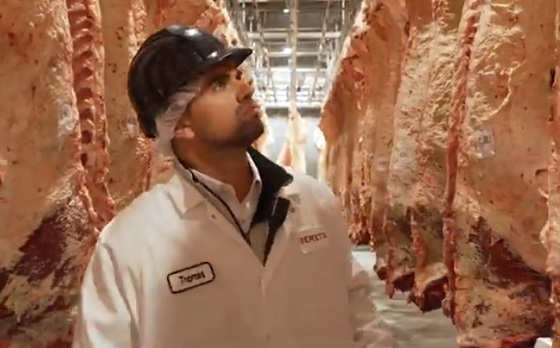
Alberta’s government continues to attract investment and grow the provincial economy.
The province’s inviting and tax-friendly business environment, and abundant agricultural resources, make it one of North America’s best places to do business. In addition, the Agri-Processing Investment Tax Credit helps attract investment that will further diversify Alberta’s agriculture industry.
Beretta Farms is the most recent company to qualify for the tax credit by expanding its existing facility with the potential to significantly increase production capacity. It invested more than $10.9 million in the project that is expected to increase the plant’s processing capacity from 29,583 to 44,688 head of cattle per year. Eleven new employees were hired after the expansion and the company plans to hire ten more. Through the Agri-Processing Investment Tax Credit, Alberta’s government has issued Beretta Farms a tax credit of $1,228,735.
“The Agri-Processing Investment Tax Credit is building on Alberta’s existing competitive advantages for agri-food companies and the primary producers that supply them. This facility expansion will allow Beretta Farms to increase production capacity, which means more Alberta beef across the country, and around the world.”
“This expansion by Beretta Farms is great news for Lacombe and central Alberta. It not only supports local job creation and economic growth but also strengthens Alberta’s global reputation for producing high-quality meat products. I’m proud to see our government supporting agricultural innovation and investment right here in our community.”
The tax credit provides a 12 per cent non-refundable, non-transferable tax credit when businesses invest $10 million or more in a project to build or expand a value-added agri-processing facility in Alberta. The program is open to any food manufacturers and bio processors that add value to commodities like grains or meat or turn agricultural byproducts into new consumer or industrial goods.
Beretta Farms’ facility in Lacombe is a federally registered, European Union-approved harvesting and meat processing facility specializing in the slaughter, processing, packaging and distribution of Canadian and United States cattle and bison meat products to 87 countries worldwide.
“Our recent plant expansion project at our facility in Lacombe has allowed us to increase our processing capacities and add more job opportunities in the central Alberta area. With the support and recognition from the Government of Alberta’s tax credit program, we feel we are in a better position to continue our success and have the confidence to grow our meat brands into the future.”
Alberta’s agri-processing sector is the second-largest manufacturing industry in the province and meat processing plays an important role in the sector, generating millions in annual economic impact and creating thousands of jobs. Alberta continues to be an attractive place for agricultural investment due to its agricultural resources, one of the lowest tax rates in North America, a business-friendly environment and a robust transportation network to connect with international markets.
Quick facts
- Since 2023, there are 16 applicants to the Agri-Processing Investment Tax Credit for projects worth about $1.6 billion total in new investment in Alberta’s agri-processing sector.
- To date, 13 projects have received conditional approval under the program.
- Each applicant must submit progress reports, then apply for a tax credit certificate when the project is complete.
- Beretta Farms has expanded the Lacombe facility by 10,000 square feet to include new warehousing, cooler space and an office building.
- This project has the potential to increase production capacity by 50 per cent, thereby facilitating entry into more European markets.
Related information
Agriculture
Unstung Heroes: Canada’s Honey Bees are not Disappearing – They’re Thriving
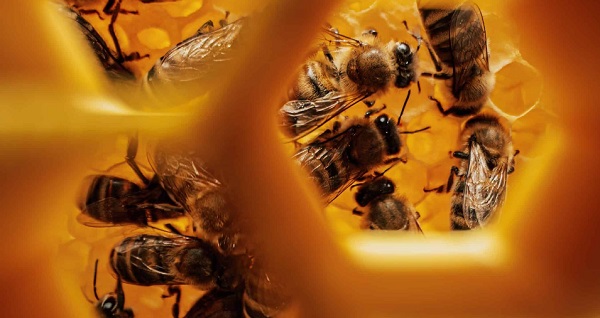
Canada’s Bee Apocalypse began in 2008. That was the year the Canadian Association of Professional Apiculturists (CAPA) first reported unusually high rates of winter bee colony losses. At 35 percent, the winter die-off that year was more than twice the normal 15 percent rate of attrition.
“Successive annual losses at [these] levels … are unsustainable by Canadian beekeepers,” the CAPA warned. This set off an avalanche of dire media reports that now appear on a regular basis. Among the many examples over the years: Huge Honey Bee Losses Across Canada” and “Canada’s bee colonies see worst loss in 20 years”. As each of these stories reminds readers, the disappearance of honey bees will doom our food supply, given their crucial role in pollinating crops including canola, soyabeans, apples, tomatoes and berries.
This year the black-and-yellow striped Cassandras are back at work, with headlines shouting “Scientists warn of severe honeybee losses in 2025” and “The Bees are Disappearing Again”. If it’s spring, the bees must be disappearing. Again.
It is, however, mathematically impossible for any species to be in an allegedly continuous and calamitous state of decline over nearly two decades and never actually reduce in number. For despite the steady supply of grave warnings regarding their imminent collapse, Canada’s bees are actually buzzing with life.
In 2007, according to Statistics Canada, there were 589,000 honey bee colonies in Canada,; in 2024, they reached 829,000, just shy of 2021’s all-time high of 834,000. Figuring a conservative summertime average of 50,000 bees per colony, that means there are approximately 12 billion more honey bees in Canada today than when the Bee Apocalypse first hit.
As for beekeepers, their numbers have also been growing steadily, and now stand at 15,430 – the most recorded since 1988. As CAPA’s report acknowledges, “the Canadian beekeeping industry has been resilient and able to grow, as proven by the overall increase in the number of bee colonies since 2007 despite the difficulties faced every winter.”
How is this possible? As is usually the case where there’s a need to be filled, the market holds the answer.
It is true that Canadian honey bees face a long list of threats and challenges ranging from mites and viruses to Canada’s harsh winters. It is also true that they perform a crucial service in pollinating crops, the value of which is estimated at $7 billion annually. However, this underscores the fact that bees are a livestock bred for a particular agricultural purpose, no different from cattle, chickens or pen-raised salmon. They are a business.
And in spite of its alleged status as an environmental totem, the honey bee isn’t even native to North America. It was first imported by European settlers for its honey-making abilities in the 1600s. Since then, it has been cultivated with deliberate commercial intent – allowing it to outcompete native pollinators such as bumble bees and butterflies even though it is poorly suited to the local winter. (This highlights the irony of all those native-plant pollinator gardens virtuously installed in neighbourhoods across Canada that end up supporting an invasive honey bee population.)
The significance of the bee economy means that when a beehive collapses over the winter for whatever reason, beekeepers have plenty of motivation to regenerate that colony as swiftly as possible. While hives can create their own queens over time, this can be a slow process given the cold Canadian climate. The better option is to simply buy a new queen from a warmer country.
In 2024, Canada imported 300,000 queens worth $12 million, mostly from the U.S., Italy, Australia and Chile. That works out to $40 each. In a miracle of nature, each of these new queens can lay up to 2,500 eggs a day, and each egg takes just two to three weeks to reach full maturity as a worker or drone. It is also possible to import entire “bee packages” that include a queen and 8,000 to 10,000 bees.
As a result, even a devastating 50 percent winter loss rate, something that has occurred only rarely in Canada in individual provinces and never nationally, isn’t necessarily fatal to any beekeeping operation. The beekeeper can purchase imported queens in April, split their existing colonies and be back in business by May or June.
And regardless of the honey bee’s apparent difficulties with Canada’s unforgiving weather (efforts are ongoing to breed a hardier Canadian variant), there’s no shortage of bees worldwide. Earlier this year, the German statistical agency reported the global beehive count rose from 69 million in 1990 to 102 million in 2023. Another study looking back to 1961 by New Zealand researchers found the number of honey bee colonies has “nearly doubled” over this time, while honey production has “almost tripled.” As the New Zealand report observes, “Headlines of honey bee colony losses have given an
impression of large-scale global decline of the bee population that endangers beekeeping, and that the world is on the verge of mass starvation.” Such claims, the authors note, are “somewhat inaccurate.” In truth, things have never been better for bees around the world.
Here in Canada, the ability to import queens from other countries, together with their prodigious reproductive capabilities, backstops the amazing resiliency of the bee industry. Yes, bees die. Sometimes in large numbers. But – and this is the bit the headlines always ignore – they come back. Because the market needs them to come back.
If there is a real threat to Canada’s bee population, it’s not environmental. It’s the risk that unencumbered trade in bees might somehow be disrupted by tariffs or similar bone-headed human interventions. Left on their own, bees have no problem keeping busy.
The longer, original version of this story first appeared at C2CJournal.ca
-

 International2 days ago
International2 days agoSecret Service suspends six agents nearly a year after Trump assassination attempt
-

 Bruce Dowbiggin1 day ago
Bruce Dowbiggin1 day agoThe Covid 19 Disaster: When Do We Get The Apologies?
-
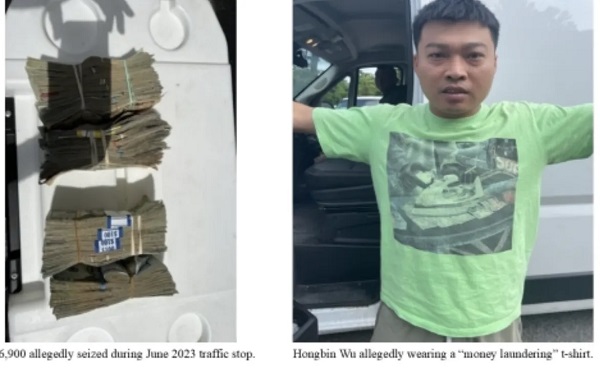
 Crime20 hours ago
Crime20 hours agoSweeping Boston Indictment Points to Vast Chinese Narco-Smuggling and Illegal Alien Labor Plot via Mexican Border
-
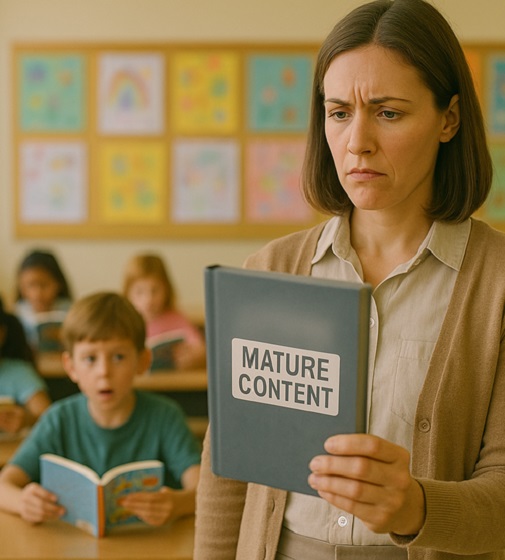
 Alberta1 day ago
Alberta1 day agoAlberta school boards required to meet new standards for school library materials with regard to sexual content
-

 Business2 days ago
Business2 days agoWEF-linked Linda Yaccarino to step down as CEO of X
-

 Automotive2 days ago
Automotive2 days agoAmerica’s EV Industry Must Now Compete On A Level Playing Field
-
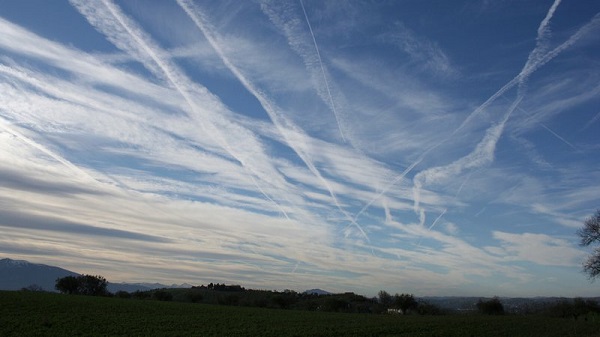
 Environment21 hours ago
Environment21 hours agoEPA releases report on chemtrails, climate manipulation
-

 Business2 days ago
Business2 days ago‘Experts’ Warned Free Markets Would Ruin Argentina — Looks Like They Were Dead Wrong




